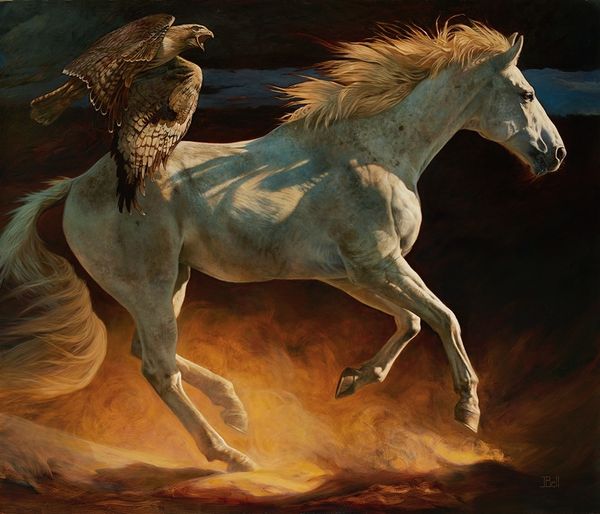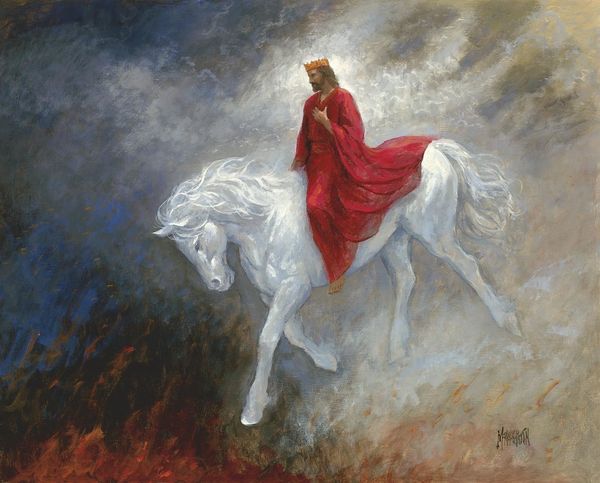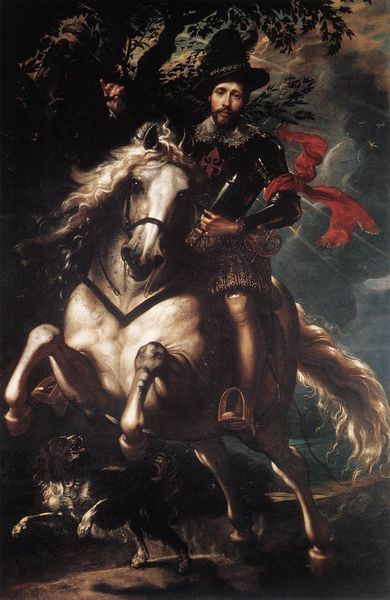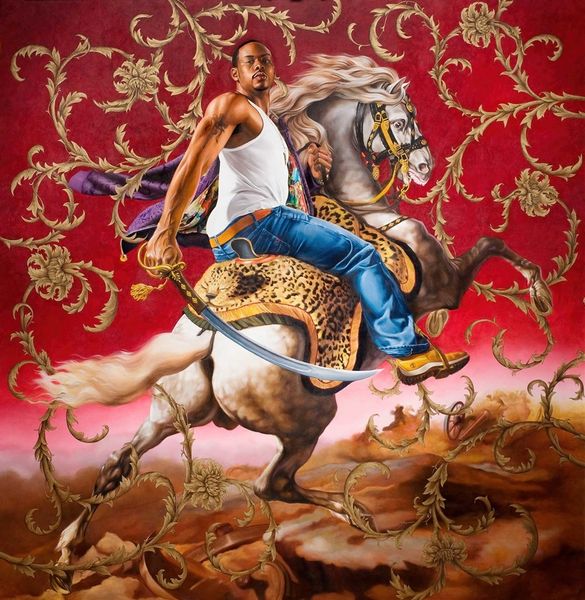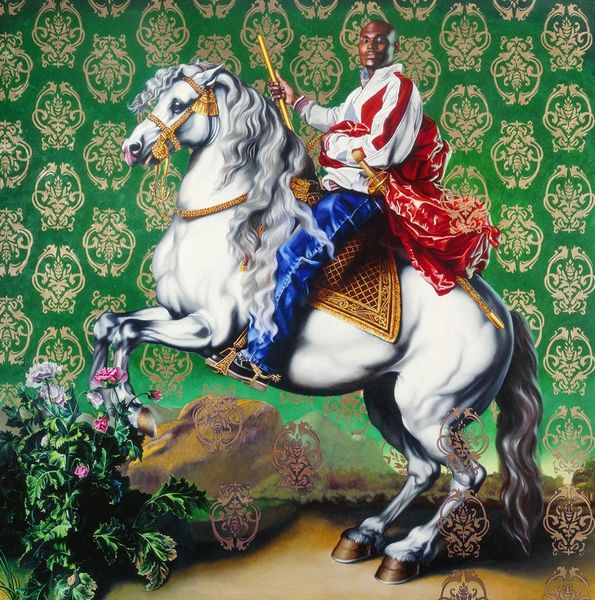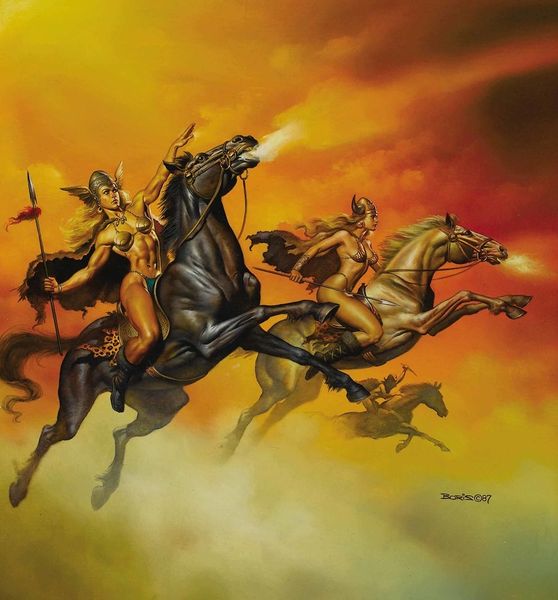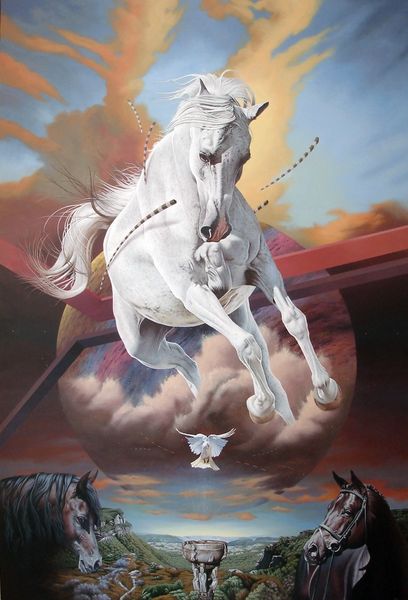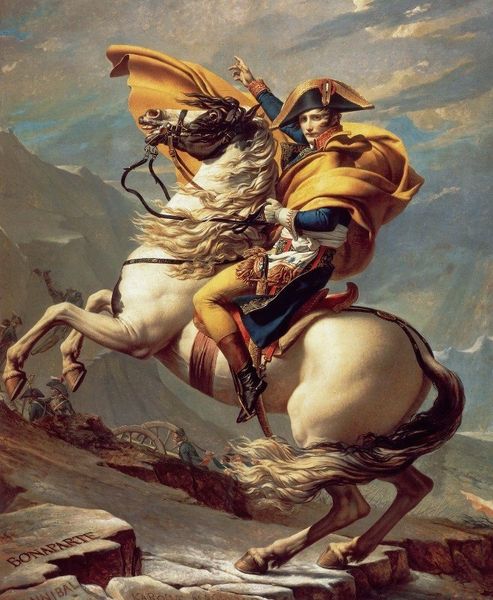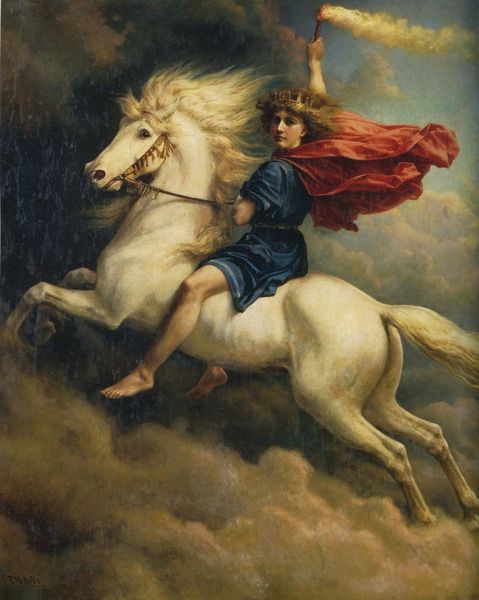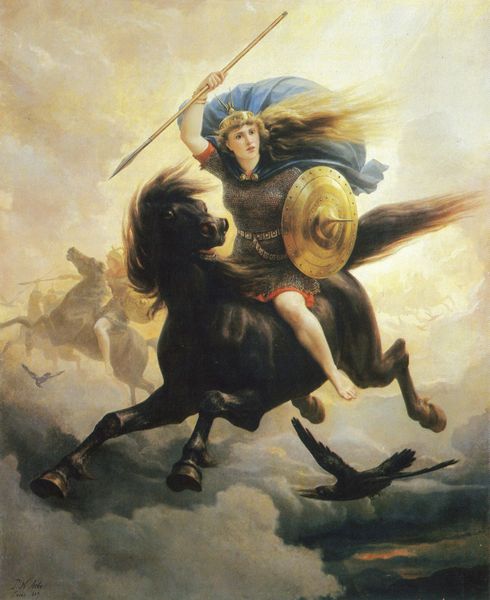
painting, oil-paint
#
portrait
#
pattern-and-decoration
#
figurative
#
contemporary
#
painting
#
oil-paint
#
figuration
#
oil painting
#
neo expressionist
#
history-painting
#
surrealist
#
expressionist
Copyright: Modern Artists: Artvee
Editor: Here we have Kehinde Wiley’s “The Capture of Juliers,” painted in 2006 using oil paint. The figure, confidently perched on a white horse, immediately grabs my attention, especially with the fleur-de-lis patterned background. How do you approach a work like this? Curator: The means of production are central here. Wiley often uses assistants to create these large-scale paintings, blurring the line between individual genius and collaborative labor. What do you make of that contrast, the historical subject versus the contemporary method? Editor: I guess it modernizes the historical reference. But, I had not even considered it a collaboration with multiple creators. Does his use of source material play into this materialist approach too? Curator: Absolutely. The source, often historical portraiture, speaks to a tradition of power and representation. But Wiley’s twist—substituting a person he meets on the street, dressed in their own clothes—disrupts that narrative. Think about the power dynamics involved: who gets represented, and how? This also creates a friction in materiality when you contrast street clothes against oil paint as an historical medium of royalty. Editor: So, he's questioning the historical means of creating the artwork as a product as well as the consumeristic context that we give art within today’s society. He takes it apart from both sides, making the message more complex than just updated portraiture. Curator: Exactly. It’s not just about updating; it’s about dissecting the historical and contemporary material conditions that shape our understanding of art and representation. Editor: That makes me appreciate the painting so much more! Seeing it as a conversation on the physical aspects of art, culture, and power instead of just another updated image. Curator: Indeed. Examining the labor, the source imagery, and the final presentation gives us a powerful lens for understanding Wiley's project.
Comments
No comments
Be the first to comment and join the conversation on the ultimate creative platform.
